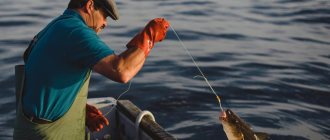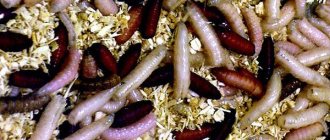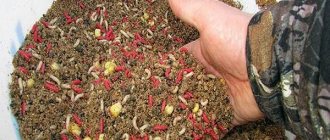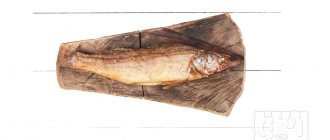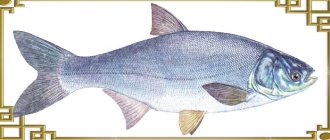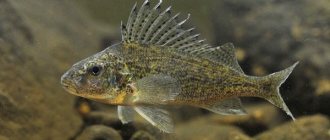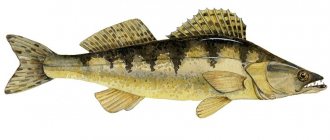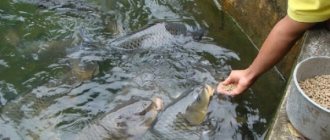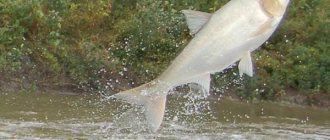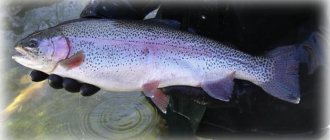Maggot is one of the most versatile and popular baits for a variety of fish. In other words, they can be called fly larvae. They are white with a cream tint. The maggot is mobile and can crawl into small cracks and holes. The habitat of the larvae is fish waste, garbage dumps and rotting meat pits. According to sanitary standards, even collecting them is contraindicated. The fly lays eggs on the remains of decomposing meat, from which larvae, called maggots, subsequently appear. With good nutrition in warm weather, the larvae can reach up to 1.5 centimeters in length in just 5 days. The maggots, photos of which are posted below, clearly confirm this fact.
Size and shape of larvae
With their size and shape, maggot flies are visually similar to caterpillars and resemble one of the most common types of aquatic larvae - the caddisfly. Based on this, it is not surprising that the inhabitants of reservoirs easily and quickly detect them, capture them, flatten them with their teeth and swallow them.
Stores mainly sell blowfly maggots. They are comparatively larger in size than other larvae. An adult blowfly maggot can reach a length of up to 15 millimeters. All amateur fishermen need to know this fact when choosing bait, because there is a possibility that the store may offer larvae of different sizes, and this is bad from a storage point of view. Most likely, this is the result of mixing maggots of different ages. Juveniles reach a length of about 4 millimeters. They are much more tenacious than mature larvae, so they can be stored much longer. In addition to their size, young individuals have a distinctive feature - a dark spot. It shines through the front shell. Old larvae, which should turn into pupae any day now, do not have it.
Types of maggots
A maggot worm is a fly larva. The most common types are the following:
- common maggot;
- gozzer;
- pink.
Common maggots are the larvae of meat and cheese flies. It grows up to 15 mm in length, has thick skin and zero buoyancy, and pupates quickly. You can store it in the refrigerator for no longer than three weeks.
Gozzers are the larvae of black and blue flies. They are true giants and grow up to 25 mm in length. They are rightfully considered the best bait for catching large specimens. Pupates even faster than usual - within two weeks. The main disadvantage is that in our country it is very difficult to find and purchase.
We suggest you read: How to get rid of flies in your house and apartment yourself and inexpensively?
Pinka is considered the most popular type. Its parents are steel-colored flies. It grows up to 10 mm, behaves actively on the hook, thanks to which it perfectly attracts fish. There is no need to look for what to feed the maggot for growth, since there will be no more kick.
Although new types of bait appear every year, none of them have yet been able to replicate the success of simple maggots.
Using maggots as fishing bait
Maggot is a bait that is very resistant to external influences and has a fairly strong shell. In this regard, after attaching it, it is necessary to keep the hook tip open together with the barb. Otherwise, the fish bite may be empty. When fishing with larvae, there is the problem of “sucking out” the entrails. This situation occurs when the fisherman’s reaction to a bite is weak. Once thrown into the water, a maggot on a hook often returns with an empty skin and no entrails. Perhaps the fisherman does not make the hook in a timely manner, so the fish has time to suck out the most delicious insides of the larva and spit out its skin.
Undoubtedly, the advantage is the strength of the shell, as well as the fact that one bait can be used several times in active biting conditions to catch several fish.
How to put a maggot on a hook?
The technology of placing maggots on a hook is a very delicate matter. If you attach it incorrectly, it will die very quickly and will not be able to attract fish. It is very small, compared to, for example, an earthworm, and therefore the hook must be small and very sharp. It is pierced in such a way as not to damage the muscles, and this is only possible when only the top layer of the skin is pierced. With this technology, it will remain alive for a long time, and will play on the hook, constantly attracting fish.
One or more maggots can be attached to a hook to catch larger fish. Many fishermen put so-called “sandwiches” on the hook: maggots and worms, maggots and mastyrka. This makes it possible to find out which bait the fish prefers at the moment. Before casting, many fishermen dip the maggot into an attractant or flavoring agent; some place it in ground seeds before fishing, where it acquires a completely different aroma.
A bunch is an effective way to plant larvae
There is another effective way to plant larvae, which is called a “bundle”. This will require a larger hook. Maggots are attached to it using the same method as described above, that is, several larvae are strung along the edge of the flesh at once. Correct placement will ensure the mobility of all maggots that are located on the hook. Thus, the bunch becomes an attractive bait for fish.
The disadvantage of this option is the following point. When fishing is carried out with a fishing rod and reel, when the equipment is reeled in for a long time, the leash becomes twisted, due to the fact that the bait acts as a propeller.
When catching small fish, there are situations when you can catch several fish with one gnawed bait. In this case, in order not to waste time replacing the bait, maggots can be planted by making a puncture in the body with a hook directly in the center, along an imaginary axis.
Fishermen often camouflage large hooks. They pierce a couple of larvae along the axis and slide them onto the hook and shank. The outermost larva is caught by the edge of the head. Then the hook tip is released a little.
Photo of maggot for fishing
Note!
Hemp seeds - tips on using and preparing seeds for fishing (120 photos)Bloodworms for fishing - secrets and tricks on how to properly obtain, store and attach for catching various types of fish (125 photos + video)
Dung worm - methods of extraction and secrets of catching. How to properly prepare and breed at home (100 photos and videos)
Read here Hemp seeds - tips on using and preparing seeds for fishing (120 photos)
Help the project, share on social networks
0
Why do fish bite on maggots?
It should be understood that maggots are not a permanent inhabitant of water bodies, so some fish probably do not perceive them as a source of food. In such cases, it is necessary to accustom the fish to bait by using maggots as bait. This trick increases catches significantly.
Maggot is a soft bait of natural origin, therefore it is a real delicacy for fish, but the inhabitants of the rivers are very careful and picky in their choice of food, because fishermen constantly visit them. There is one trick: if you paint the larvae brown, they cease to arouse suspicion, and the fish rushes to feast on such an attractive bait.
It is important to know that maggots are attractive to fish only in warm weather. On cold autumn and spring nights and days with such bait, a sharp decrease in catch can be noted. At this time of year, the best option would be to replace maggots with other baits. For example, babka, bloodworm, shitika and others.
If, however, fishing takes place in cold water, then it is best to use small larvae, small hooks and light floats. Accordingly, such recommendations are only suitable for catching small fish. This trick will help to significantly increase the number of bites.
How to get blowfly larvae and prepare them for fishing
Finding maggots is not difficult. They live in garbage dumps, cesspools, livestock farms, near slaughterhouses and meat processing plants.
If you need to get larvae directly while fishing, you should dig a small hole near the pond and place pieces of fish in it.
Flies flying by will lay eggs on the fish. After a day, larvae will begin to appear from the eggs, which need to be cleaned and placed in dry sawdust. This method is used in the warm season.
In winter it is much more difficult to obtain larvae. You can purchase them at a fishing store or breed them at home.
Storage methods
Fresh maggots have delicate skin; if you pierce them, the insides will simply flow out. Therefore, you need to purchase it a couple of days before fishing to give it time to brew.
It is best to store larvae in the refrigerator. The temperature should be positive, close to zero. Maggots, photos of which you can see in the article, with this method of storage become motionless and fall into torpor. Their life processes slow down. In this state they can be stored for up to two months.
Conservation
Preparation for preservation involves drying the larvae. For this, many fishermen use flour, but, as practice shows, this method is not suitable for long-term storage, since the flour quickly begins to mold. The best option is to add small sawdust from deciduous wood, which is odorless. After this, the maggots must be cooled, and then, separating them from the sawdust, place them in a container and close it tightly. This must be done in order to close access to air. The container with the larvae is eventually placed in the refrigerator.
Another preservation option is to add bread crumbs to the maggot box. From them it will acquire a yellowish color, and the skin will become stronger.
DESCRIPTION WHITE MAGGOG (BULK)
The larva of a large, blue blowfly. One of the most popular baits for predatory and carp fish.
Place maggots in 1-3 pieces, depending on its size and hook size. The hook is inserted either through the head, across the larva, or along the larva, then sliding it onto the hook shaft and threading the next
It is important to remember that maggots must be stored in a dry, tightly sealed container that does not have the slightest crack. Also store maggots in a cool place. Feed maggots with raw fish.
At a temperature of 0-2 degrees Celsius, maggots become numb, and at warmer temperatures they quickly come to life. Usually the day before fishing, maggots are fed with cottage cheese, and just before fishing they are sprinkled with flour.
maggot photo
Preparing for fishing
Before fishing, the larvae should be returned to room temperature. The maggot for fishing should again become mobile. Based on this, it must be taken into account that the high mobility of larvae and a large number of them in one container can harm them when transported over long distances. At the moment of high activity of the larvae, friction arises between them, which leads to the death of a certain number of specimens. To avoid this, the larvae are cooled before the trip, then carefully placed in a thermally insulating container, which you can make yourself from any foam box or buy a special case with foam inserts, for example.
However, it should be remembered that it is important not to overheat or freeze the larvae, otherwise they may quickly die.
Upon arrival at the fishing site, immediately before starting fishing, it is useful to keep the maggots in a jar, into which you first need to add a drop of anise oil. Fill the jar halfway with larvae and fill approximately the same volume with sawdust. It is best to store the larvae throughout the entire fishing trip in this very jar. It is necessary to make holes in its lid for air. If maggots are in the jar for a long time, its contents should be carefully sorted and dead specimens should be removed from it.
There is no need to throw away pupated larvae. They can be useful for bait in the summer.
Maggot at home. Growing methods
Fly eggs can be obtained in two ways:
- The summer option is obtained from the substrate, that is, from fresh fish. You just need to leave the fish in the sun for a few hours. The substrate, aged in this way, with the released fly eggs, should be placed in a jar with sawdust and placed in a cool, dry place. After about seven days, maggots will appear. They will completely leave the substrate and move into the sawdust. The remains of the substrate should be thrown away unnecessarily, the remaining larvae should be sown and placed in fresh sawdust. Unpleasant odors associated with cultivation will disappear within 3 days.
- A winter option is growing in gauze nets. Cover the flies with a gauze net and feed them under the net. There they will definitely lay eggs, from which white worms with hard skin will subsequently emerge. The main disadvantage is the laboriousness of catching the flies themselves and maintaining the appropriate temperature for their normal functioning. On average, flies begin to lay eggs from 3 to 6 days from the start of feeding. The substrate is prepared in the same way as in summer, only they use another heat source rather than the sun.
Mature maggots should be kept at temperatures close to freezing to slow down their pupation process. The most suitable and reliable place for them is the refrigerator. Room temperature has a beneficial effect on the development of larvae, so within three days they become pupae. To obtain larger specimens of larvae, it is necessary to add fresh substrate in the middle of their development, which should be without fly eggs.
Breeding maggots at home is dangerous to human health, so you must follow strict rules, which include personal hygiene and care in handling them. If you do not follow the prescribed rules, you can expose yourself to the risk of contracting various diseases.
Construction of a growing container
How to grow maggots so that they have less contact with unpleasant odors and sticky substrate? Many fishermen easily solved this problem by constructing special maggots that can be used at home. They are easy to make at home with your own hands. And breeding larvae in them does not require frequent human intervention.
The maggot trap consists of three containers placed one on top of the other.
- The upper container is used for storing meat or fish. It has a holey lid and the same bottom.
- The middle container also has a holey bottom; wood shavings or large sawdust are placed in it in a layer of 5-7 centimeters.
- The lower container is used for clean maggots; sawdust is poured into it.
This design works like this:
- We put the meat in the upper container and place it in a shaded place where flies can find the meat.
- After two or three days we check, and if we see that the flies have laid eggs, we cover the top of the structure with a lid and put it in place.
- The hatched maggots grow and, having reached a marketable size, tend to pupate. They fall down and penetrate through the holes into the middle container.
- Having passed through a layer of sawdust or shavings, they are cleaned and fall into the lower vessel, and from there they are removed and packaged in jars that are taken fishing.
The entire production of maggots takes from a week to ten days, depending on the air temperature and the speed at which the blowfly lays its eggs on the prepared substrate.
Flavoring and coloring
A process such as maggot breeding involves aromatization and coloring procedures. Young individuals of white worms are better amenable to such actions, which should be carried out by feeding them with special food. This is due to the fact that young larvae are more willing to eat it.
Maggot is difficult to dye at home, and this procedure does not always lead to the desired results. Therefore, it is safer and easier to purchase already painted bait in the store.
To impart a scent to the bait, it is necessary to feed the larvae with flavoring agents. This procedure is carried out immediately before fishing.
A maggot is the larva of a large fly. And an indispensable element in fishing. Today, more and more amateur fishermen prefer to fish with such a popular bait as maggot. This is due to the fact that it is easy to put on the hook, on which it holds perfectly. This bait has an attractive smell, and sometimes it is the only bait that the fish does not ignore, like all the others, but, on the contrary, is always happy about it. Maggots, unlike other baits, are easy to store for a long time. In addition, you can also fish with it at any time of the year.
Advantages and disadvantages
This type of attachment undoubtedly has more pros than cons, and is very popular for good reason. The advantages of the bait include the following:
- maggots are very mobile, actively wriggle on the hook, which attracts fish well;
- they are easy to attach to hooks, they hold very tightly, which allows the use of both float and bottom gear;
- it is one of the main components for preparing various baits for predatory and peaceful fish;
- Maggot is very easy to store.
Despite all the advantages, there are also significant disadvantages. But they are relevant only when purchased, and not when grown at home. These include:
- deficit. Maggot is not sold in all fishing stores, and sometimes it is very difficult to find;
- price. As a rule, prices are greatly inflated, and the larger the larvae, the more money you will have to pay for them.
After weighing the pros and cons, many fishermen decide to grow larvae themselves. All that remains is to find out how to properly breed maggots.
Many fishermen, guided by the desire to increase the attractiveness and catchability of the larvae, show their wildest culinary fantasies, resulting in new types of maggots used in fishing.
We suggest you read: How to get rid of flies in your dacha - read!
The recipe for pickled maggots was invented by English fishermen. The main goal was to ensure that the bait held more firmly on the hook. First, it is marinated in vinegar for an hour, after which it is dried using a regular napkin or additionally baked in the oven. This method can be applied to individuals that may soon deteriorate.
Maggot with egg came to our country from Poland. It’s hard to say whether it performs better or worse in fishing conditions. Before fishing, the maggot should be fed the yolk of a hard-boiled egg. After being eaten, the worm turns yellow. For fans of this method, the question of how to feed maggots for fishing disappears.
Many fishermen are sure that only red maggot can be better than ordinary maggot. It is used by athletes in competitions, who have repeatedly confirmed the effectiveness of such bait. To color the bait, it is dipped in milk with beet juice or food coloring. Plain water with the addition of potassium permanganate, iodine, brilliant green or food coloring is also often used.
When it is not possible to store maggots in the right conditions, some fishermen freeze them and allow them to thaw before going fishing. Based on observations, this option is not very effective, since fish definitely respond better to live bait than to dead bait.
Boiled maggot worm is great for winter and summer fishing. To prepare it, throw it into hot, non-boiling water and take it out after 5-7 minutes.
It is also common to see artificial maggot substitutes. To make it, you need to cut pieces of foam rubber, soak them in egg white and throw them into boiling water. The result is baits that are slightly similar to the original.
A maggot is a fly larva.
